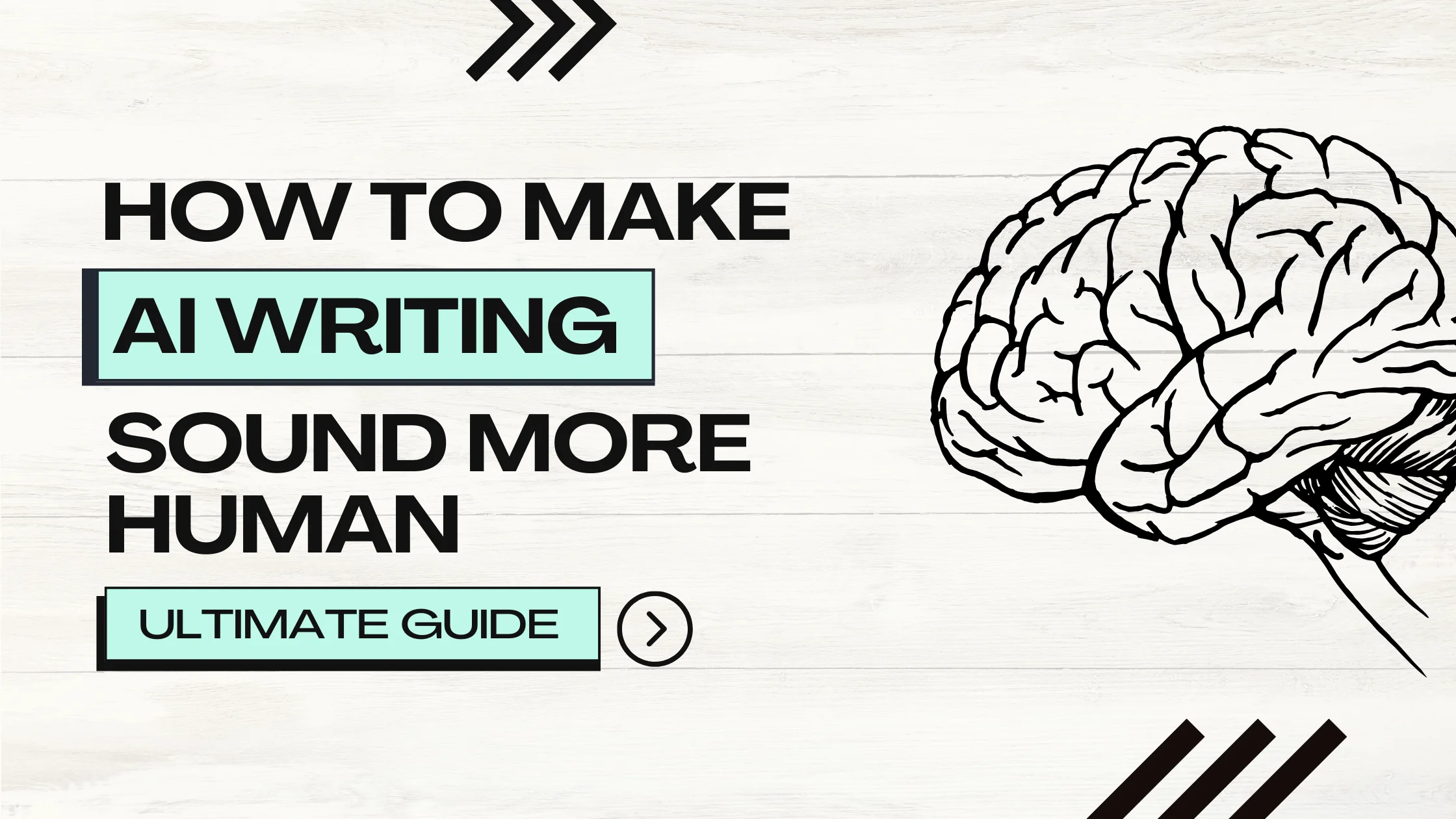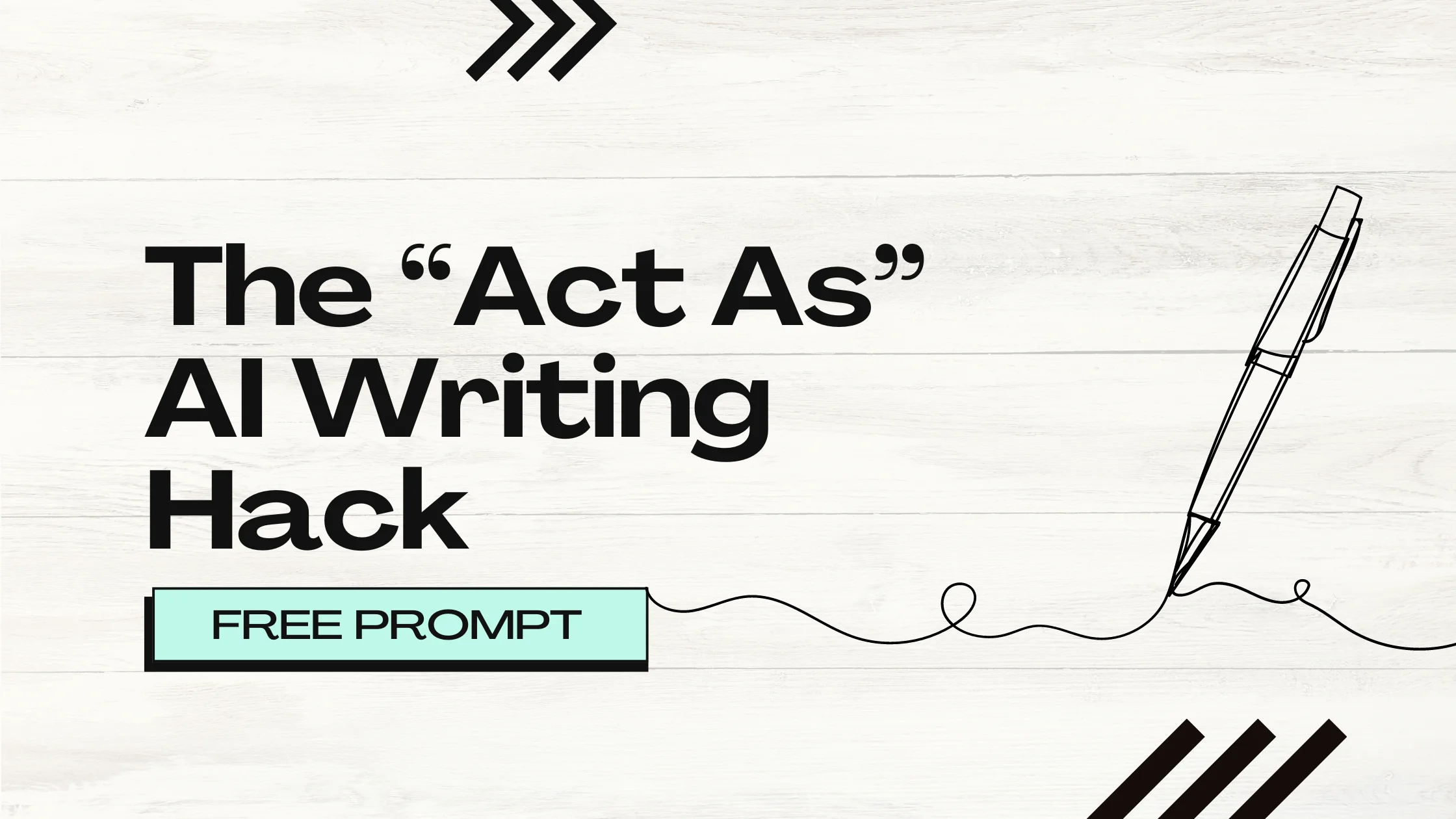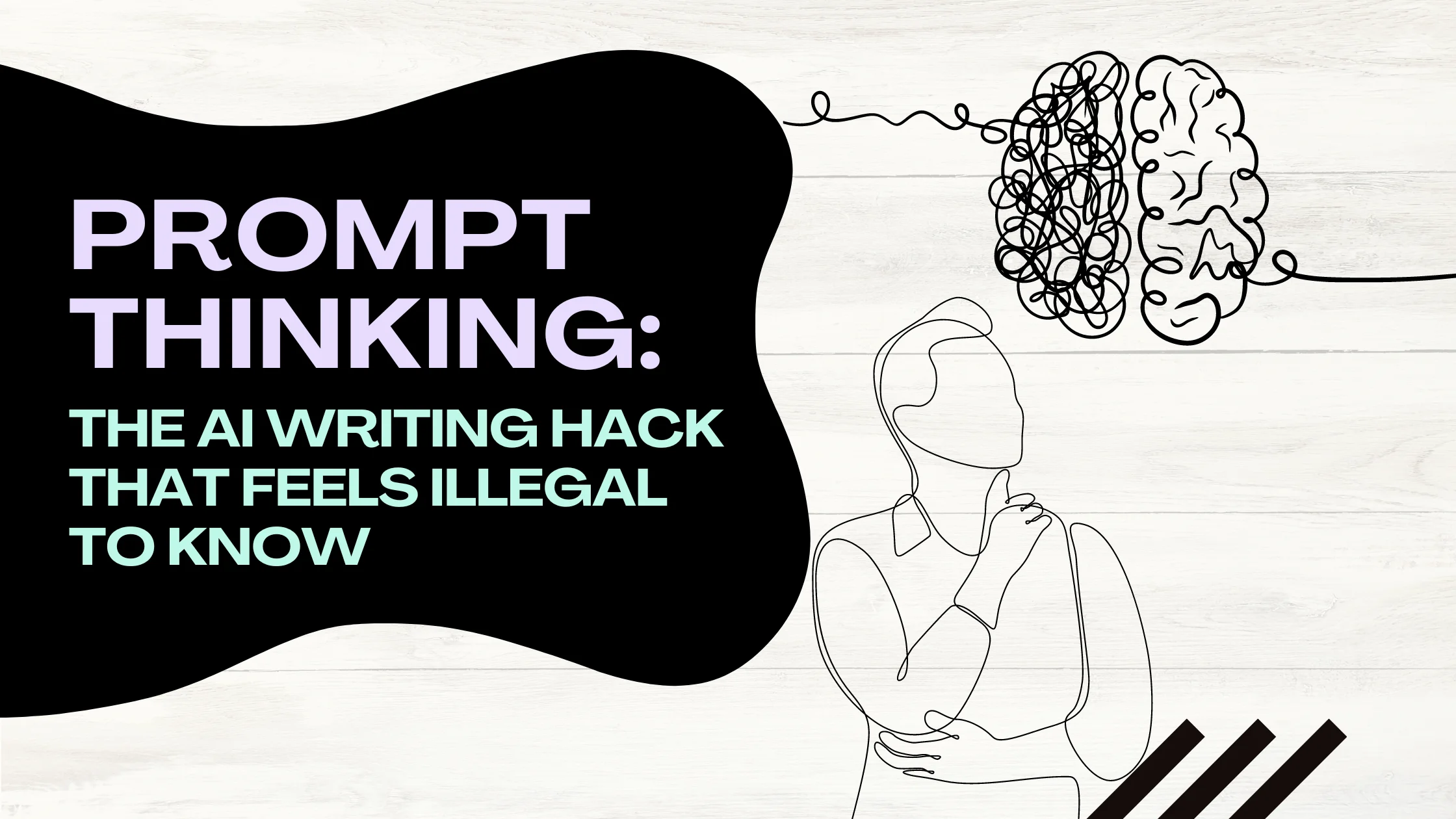In the age of artificial intelligence, creating content that resonates with human readers while leveraging AI tools is a crucial skill. Everyone wants to know how to make AI writing sound more human and understandably so.
It takes a little extra time, but it’s worth the extra connection it creates.
This guide will walk you through proven strategies to elevate your AI-generated content, making it indistinguishable from human writing.
Whether you’re a content creator, marketer, or business owner, these techniques will help you harness the power of AI while maintaining a genuine, human touch.
Understanding the AI Writing Landscape
Before diving into techniques, it’s essential to grasp the current state of AI writing. Tools like GPT-3, ChatGPT, and Claude have revolutionized content creation, offering unprecedented speed and scalability. However, they often lack the nuance, emotion, and personal touch that human writers bring to the table.
The goal isn’t to replace human creativity but to enhance it. By combining AI efficiency with human insight, you can create content that’s both scalable and deeply engaging.
Start with a Strong, Human-Generated Outline
The foundation of human-like AI writing begins with a well-crafted outline. Here’s how to approach it:
- Brainstorm your main points manually
- Organize ideas in a logical flow
- Include personal anecdotes or unique perspectives
By starting with a human-generated structure, you ensure the content maintains a natural progression and includes elements that AI might overlook.
Use AI as a Collaborative Tool, Not a Replacement
Think of AI as your writing partner, not your ghostwriter. Here’s how to collaborate effectively:
- Generate initial drafts with AI
- Critically review and edit the output
- Inject your own voice and experiences
- Use AI for research and idea expansion
This collaborative approach combines AI’s efficiency with your unique insights and style.
Refine AI Prompts for More Human-Like Responses
The quality of AI output largely depends on the prompts you provide. To get more human-like responses:
- Be specific and detailed in your prompts
- Include tone and style instructions
- Provide context and background information
- Ask for examples or analogies
For instance, instead of “Write about climate change,” try “Write a conversational blog post about climate change, including personal anecdotes and using a concerned but hopeful tone.”
Inject Emotion and Personality
AI often struggles with conveying genuine emotion. To add a human touch:
- Incorporate emotional language and personal opinions
- Use rhetorical questions to engage the reader
- Add humor or wit where appropriate
- Include sensory details in descriptions
These elements make the content more relatable and engaging for human readers.
Vary Sentence Structure and Length
AI tends to generate uniform sentences. To make your writing more natural:
- Mix short, punchy sentences with longer, more complex ones
- Use sentence fragments for emphasis
- Incorporate rhetorical devices like alliteration or metaphors
- Vary paragraph lengths to improve readability
This variety mimics the natural flow of human writing and keeps readers engaged.
Include Timely and Cultural References
AI models are trained on historical data and may lack current context. Stay relevant by:
- Adding recent events or trends
- Incorporating pop culture references
- Mentioning current industry developments
- Updating statistics and data points
This not only makes the content more human but also more valuable to readers.
Address the Reader Directly to Make AI Writing Sound More Human
Create a connection with your audience by:
- Using “you” and “your” to speak directly to the reader
- Anticipating and addressing potential questions or concerns
- Sharing personal experiences or opinions
- Encouraging reader interaction or feedback
This approach creates a more conversational, human-like tone.
Edit for Consistency and Flow
AI can sometimes produce disjointed or repetitive content. To smooth it out:
- Ensure consistent tone and style throughout
- Remove redundant information
- Add transitions between paragraphs and sections
- Check for logical progression of ideas
A thorough edit can transform robotic AI text into flowing, human-like prose.
Use Analogies and Storytelling
Humans often understand complex ideas through stories and comparisons. Enhance your AI content by:
- Adding relevant anecdotes or case studies
- Using analogies to explain difficult concepts
- Incorporating storytelling elements (characters, conflict, resolution)
- Providing real-world examples
These elements not only make the content more human but also more memorable.
Localize and Personalize Content
AI often generates generic, one-size-fits-all content. Make it more specific by:
- Adapting to local language and cultural nuances
- Addressing specific audience pain points or interests
- Customizing examples for your target demographic
- Including region-specific data or trends
This level of personalization is something AI alone often struggles to achieve.
Implement a Human Quality Check
Before publishing, always have a human review the content. Look for:
- Factual accuracy and logical consistency
- Appropriate tone and style
- Proper use of idioms and colloquialisms
- Overall engagement and readability
This final human touch ensures the content meets the high standards your audience expects.
Final Thoughts on Making AI Writing Sound More Human
As AI writing tools continue to evolve, the ability to make AI-generated content more human will become increasingly valuable. By implementing these strategies, you can create content that harnesses the efficiency of AI while retaining the creativity, emotion, and nuance that only humans can provide.
Remember, the goal isn’t to disguise AI writing but to use it as a tool to enhance human creativity. With practice, you’ll find the perfect balance between AI assistance and human insight, producing content that’s both scalable and genuinely engaging.
Want to master these techniques and more? Check out AIWritingSchool.com for comprehensive courses on leveraging AI in your writing while maintaining that crucial human touch. Whether you’re a beginner or an experienced writer, our programs will help you stay ahead in the ever-evolving world of content creation.
By consistently applying these methods, you’ll not only improve your AI-generated content but also develop a unique style that sets your writing apart in the digital landscape. The future of writing is here – it’s time to embrace the power of AI while celebrating the irreplaceable value of human creativity.





